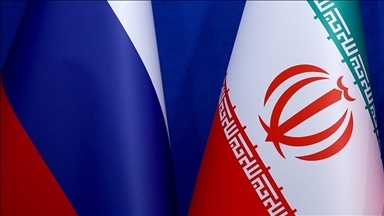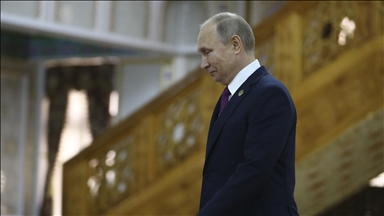Poland-Russia drone tensions: What’s next?
A drone incursion into Polish airspace last week has sharply raised fears of a wider conflict between Russia and Europe

- A drone incursion into Polish airspace last week has sharply raised fears of a wider conflict between Russia and Europe
- NATO allies are reinforcing defenses and signaling solidarity with Warsaw, but questions linger about how to prevent future incidents without escalation
- European measures to support Poland and protect its airspace are the right steps, says Andrew D’Anieri of the Atlantic Council’s Eurasia Center
ISTANBUL
The drone incursion into Polish airspace last week has sharply escalated tensions between Warsaw and Moscow, drawing urgent NATO reinforcements and raising fears that Europe’s eastern flank could be dragged deeper into the Russia-Ukraine war.
Polish authorities called the event an “unprecedented violation” of sovereignty, saying multiple drones – described as likely Russian “decoys” – crossed into its airspace before three were shot down by Polish defenses. Moscow insists its drones were striking Ukrainian targets and had no intention of hitting Poland.
The incident has triggered emergency meetings at the UN, NATO consultations, and sweeping restrictions on flights in Poland’s east. Analysts warn the clash underscores a dangerous new phase in the war, with NATO territory increasingly at risk.
A first for NATO
On Sept. 10, Poland’s Prime Minister Donald Tusk said “a huge number of Russian drones” had crossed into Polish airspace overnight.
In response, Polish forces, supported by NATO aircraft, shot down drones in the first such action by a NATO member since the start of the Ukraine war in 2022.
Warsaw also invoked Article 4 of the NATO treaty, which allows members to consult urgently when their security is threatened.
The alliance also launched Eastern Sentry, a new initiative to reinforce air defenses across the eastern flank. Meanwhile, Poland closed the Malaszewicze border crossing with Belarus, a vital trade artery, in protest against Russian-Belarusian military drills held nearby.
Russia’s Defense Ministry acknowledged striking targets in western Ukraine, but denied any intent to violate Polish sovereignty.
“Targets within Poland’s territory were not planned to be attacked. The maximum flight range of Russian UAVs used in this attack, allegedly crossing into Polish territory, does not exceed 700 kilometers (435 miles). Nevertheless, we are ready to conduct consultations on this issue with the Ministry of Defense of Poland,” it said.
Europe ramps up defenses
The incursion has spurred swift European action.
UK Prime Minister Keir Starmer announced that Royal Air Force Typhoon jets will deploy to Poland to “further air defense,” flying alongside aircraft from Denmark, France, and Germany under NATO’s Eastern Sentry mission.
A British Voyager refueling aircraft will also support the deployment. Czech helicopters and troops have also been dispatched, further bolstering NATO’s presence.
France has also agreed to send three Rafale fighter jets to Poland, with one arriving over the weekend, according to a Monday statement by NATO.
Italy is also planning to participate in the mission, with a contribution of two Eurofighter jets, news agency ANSA reported.
On Monday, NATO also confirmed that Germany has readied four Eurofighters, while Denmark will contribute fighter jets and an anti-air warfare frigate. Spain and Sweden have also signaled that they will contribute, NATO said. For its part, the Netherlands has already been supplying F-35 aircraft since Sept. 1 to help protect the NATO treaty area, supporting Poland’s airspace defense.
Dutch F-35s are expected to be stationed in the country for the next four months.
Andrew D’Anieri, associate director of the Atlantic Council’s Eurasia Center, sees the moves as the right step to secure Polish airspace, saying that positioning air defense systems closer to Ukraine’s border could allow drones to be intercepted before reaching NATO territory.
He was more cautious on Warsaw’s proposal for a no-fly zone over Ukraine. “They require lots of air power … If we’re talking about a no-fly zone, that’s quite a significant commitment in terms of resources, and for it to be credible, you’d need a lot of coordination,” he said.
Could there be more escalation?
The incident in Poland was followed swiftly by Romania, which reported scrambling fighter jets to monitor Russian strikes when a drone entered its airspace. Russia dismissed the report as a Ukrainian “provocation.”
D’Anieri warned that NATO and Europe have reason to be concerned. “Russia, along with Iran and North Korea, are dramatically increasing their drone capabilities … Their targeting is only getting better, and this could become a really acute threat to NATO territory.”
Adding to the tension, Russia and Belarus concluded their Zapad-2025 war games on Tuesday, supervised directly by President Vladimir Putin. He said the drills aimed to train forces for the “unconditional protection of sovereignty, territorial integrity, and defense against any aggression towards the Union State.”
Western officials have noted that the exercises’ timing and location, near NATO borders, echo maneuvers that preceded the start of the Russia-Ukraine war in 2022.
“Perhaps the worrying thing is just the proximity to NATO borders,” D’Anieri said.
“We’ve seen Poland in particular and other NATO countries send a fair amount of troops to cover their own borders … to try to deter any further escalation that could come out of these exercises.”
Regarding reports that Belarus allowed US observers to attend the drills, D’Anieri said this was a positive sign of transparency that helps to bring tensions down.
Anadolu Agency website contains only a portion of the news stories offered to subscribers in the AA News Broadcasting System (HAS), and in summarized form. Please contact us for subscription options.







